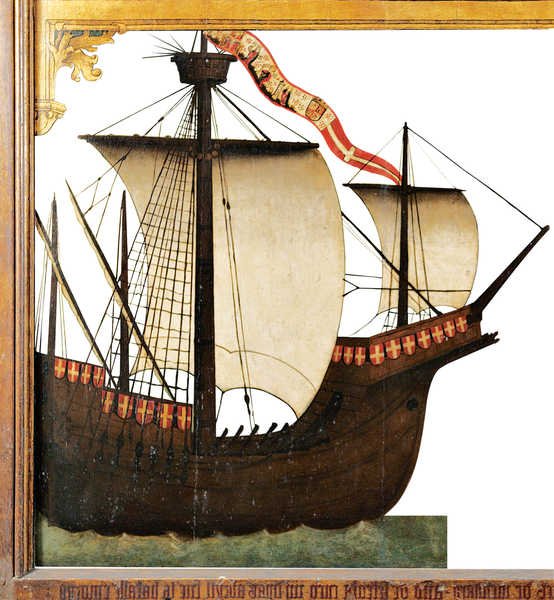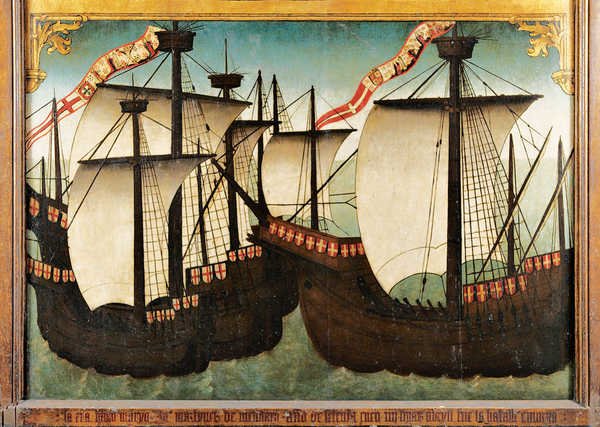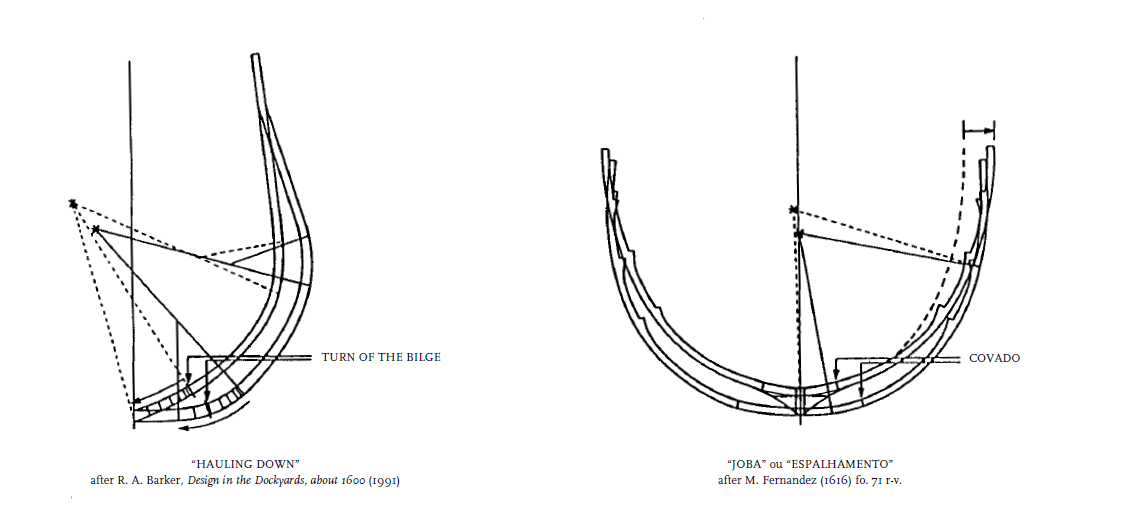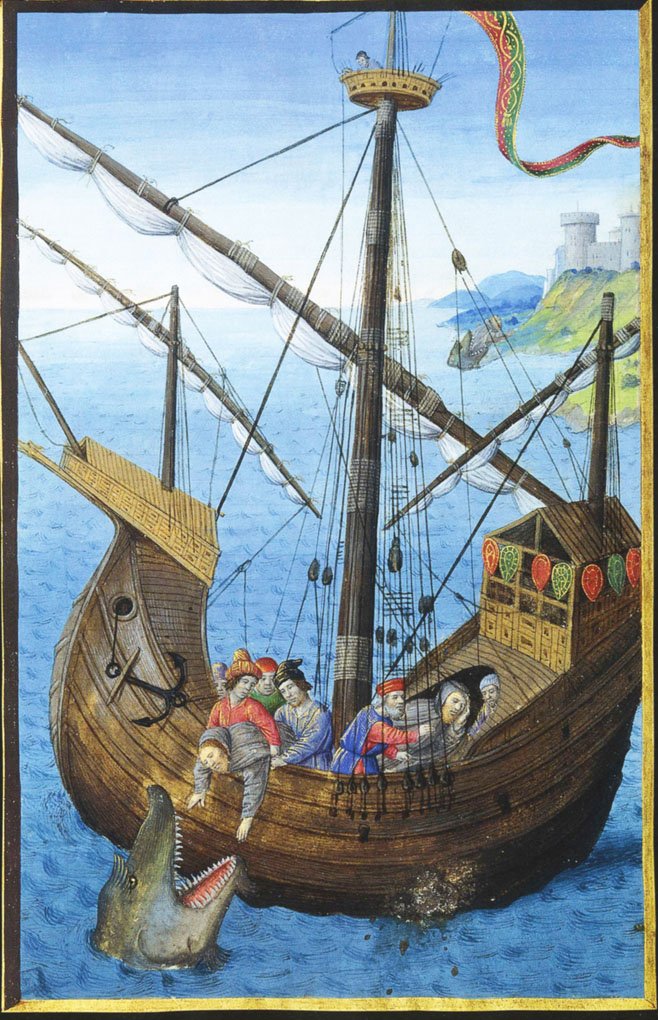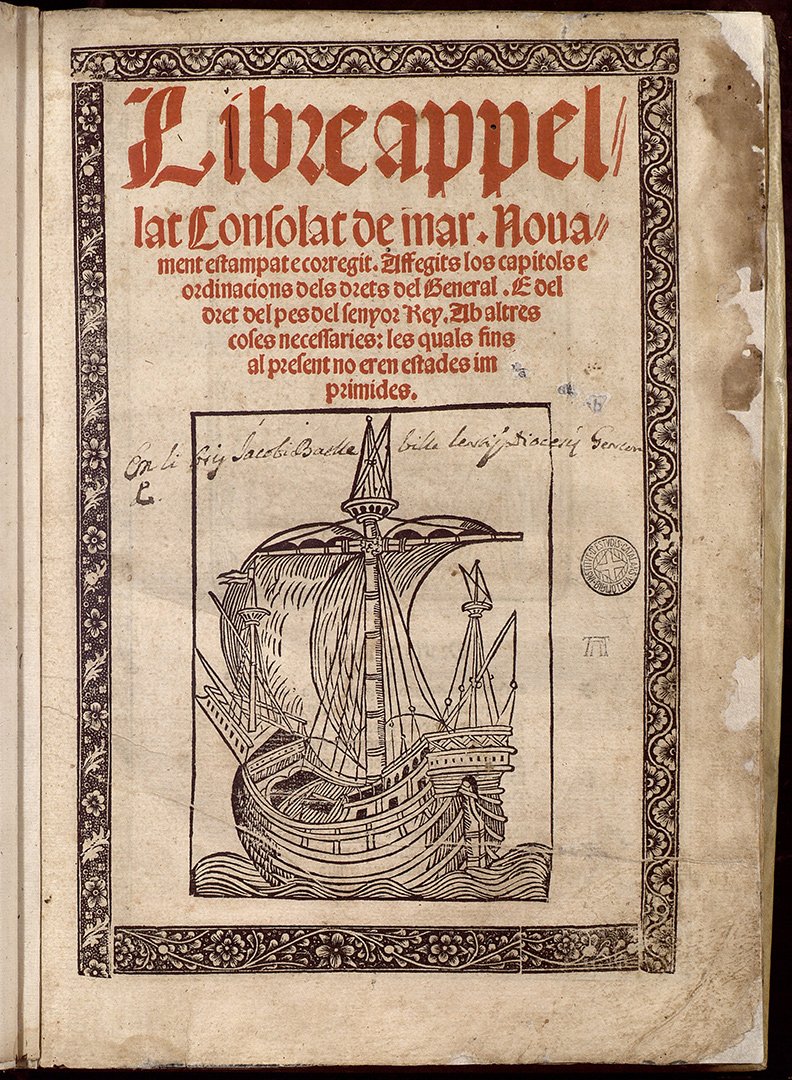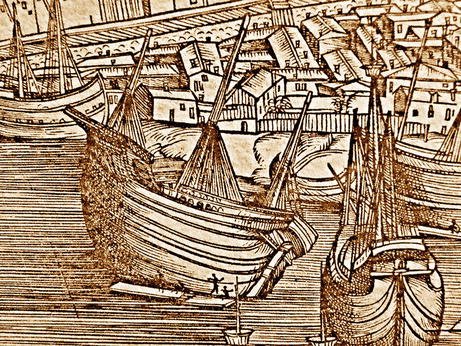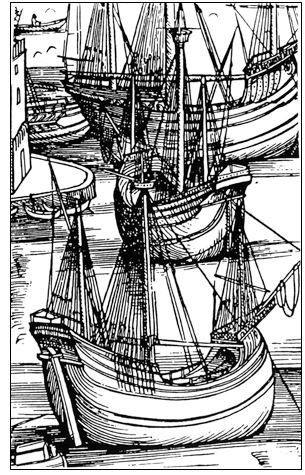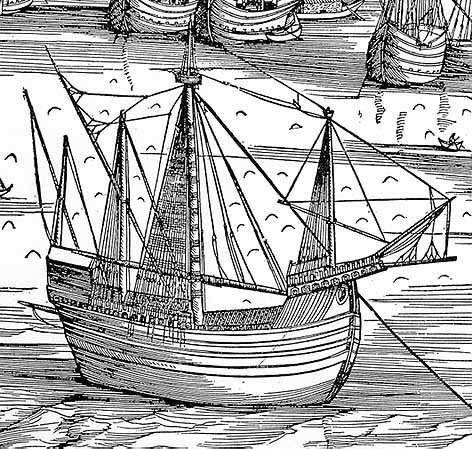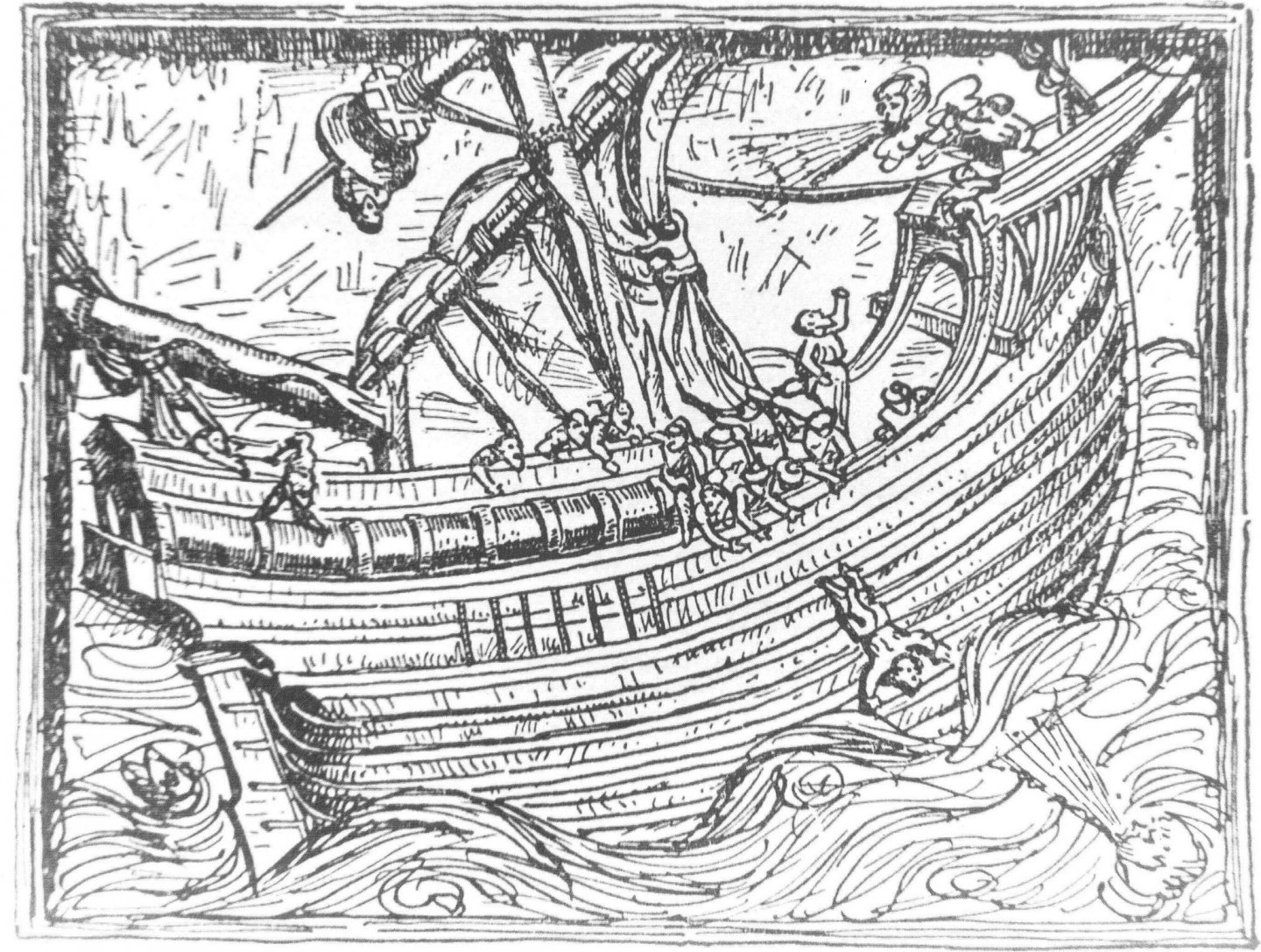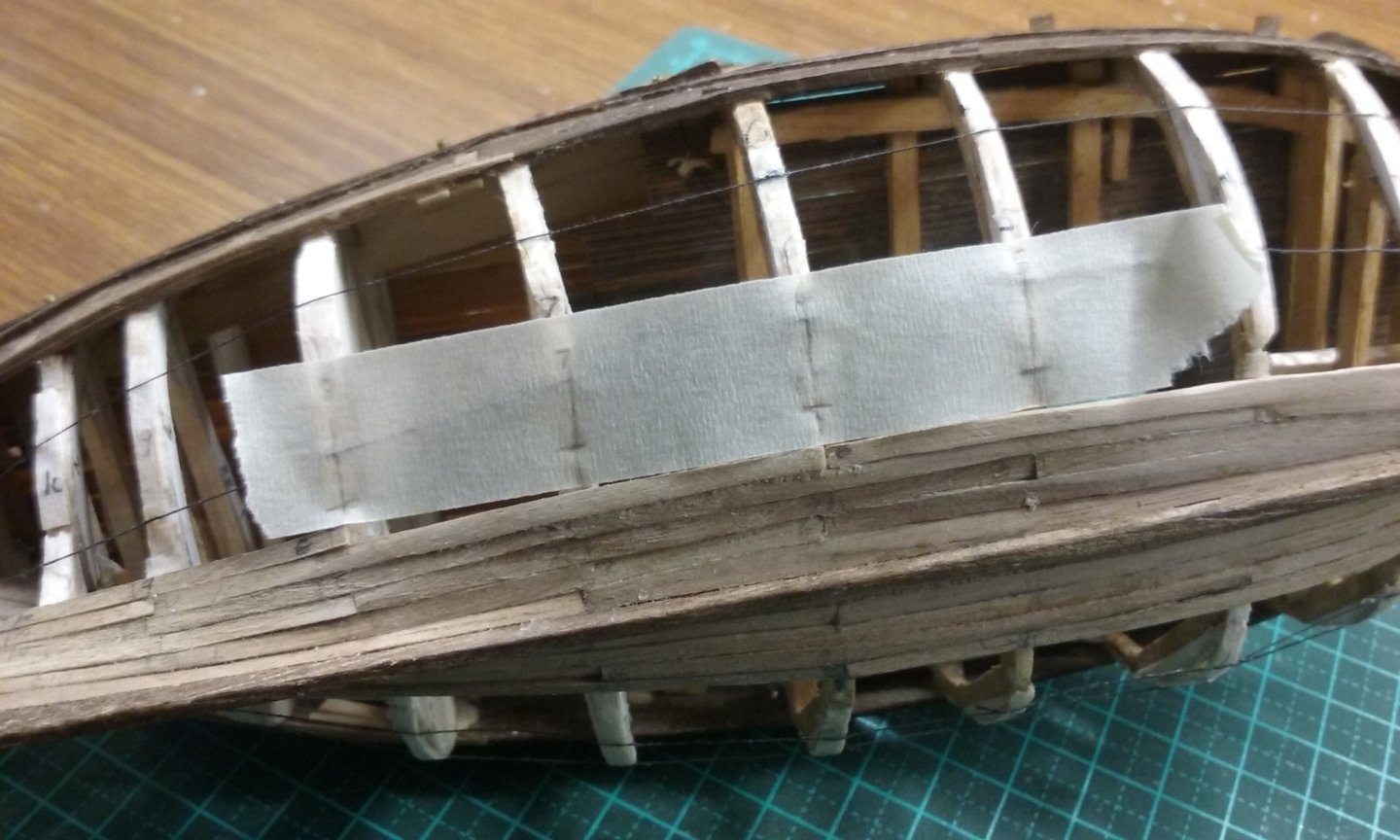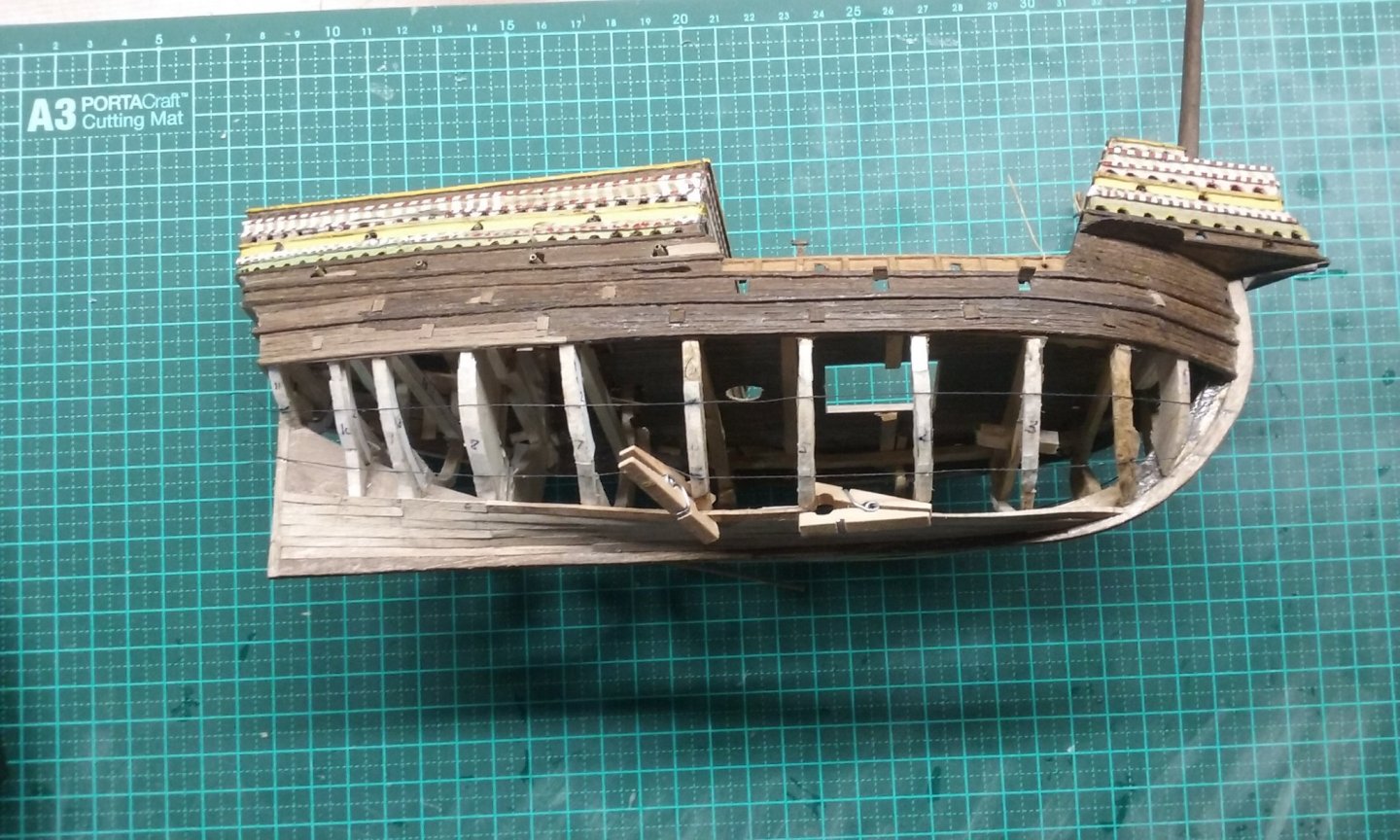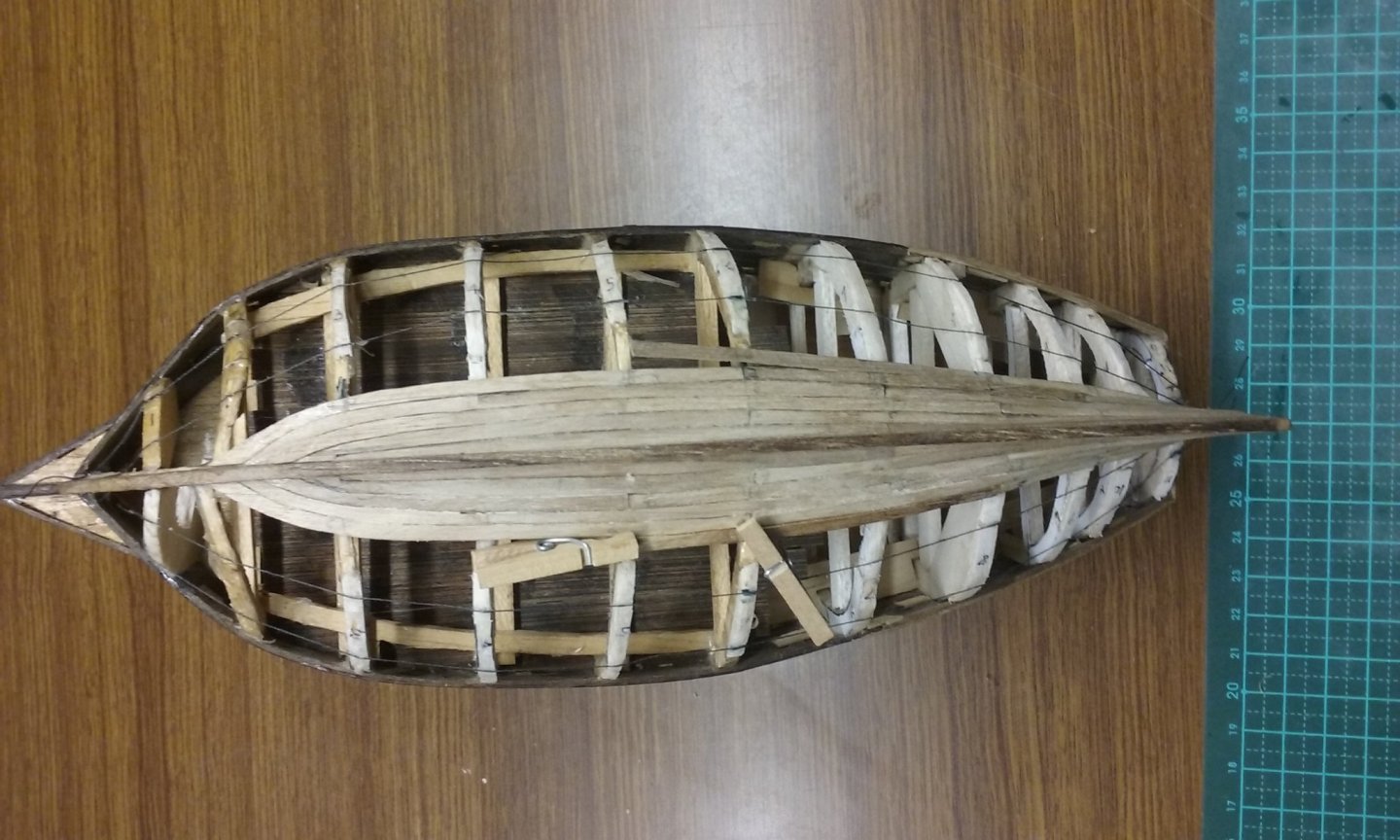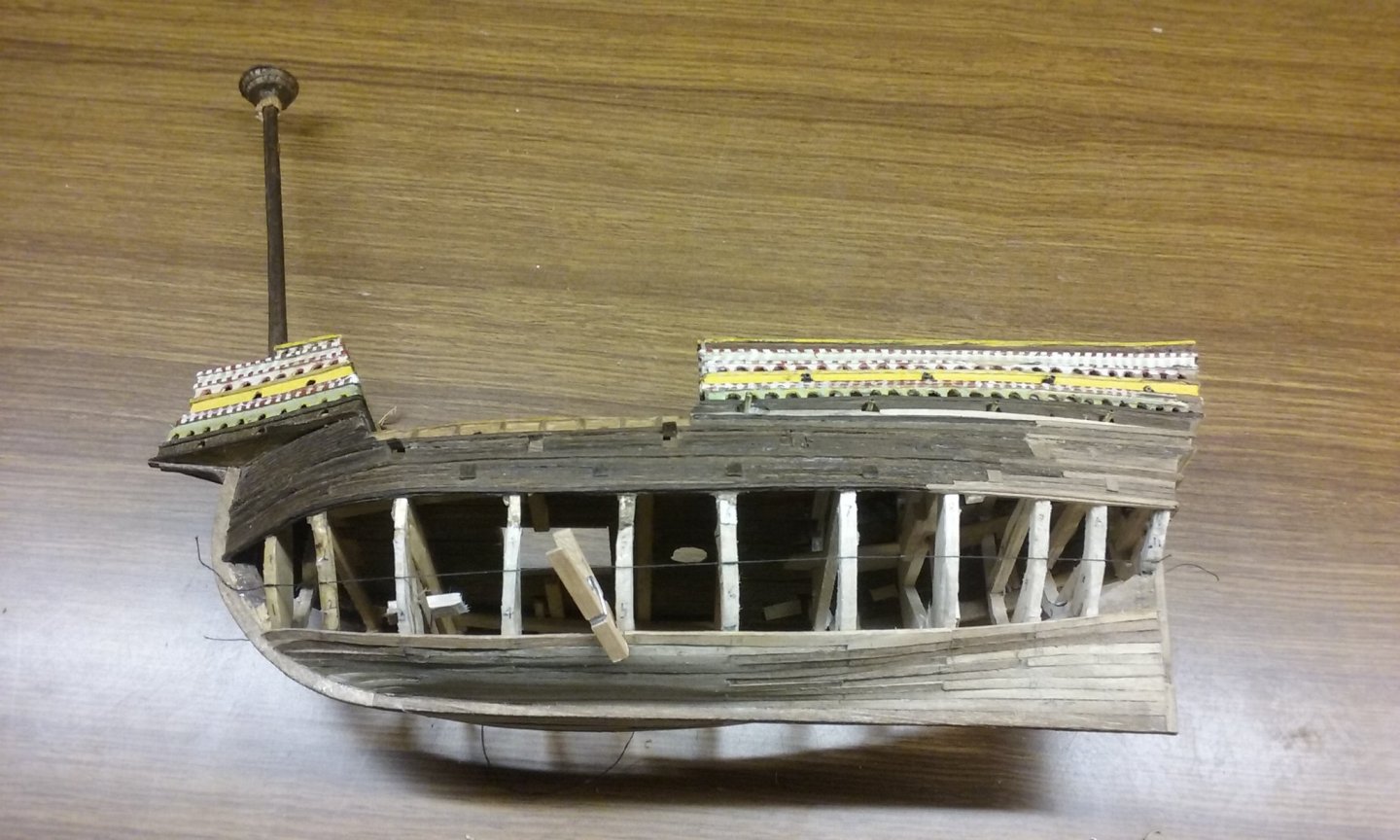-
Posts
7,986 -
Joined
-
Last visited
Content Type
Profiles
Forums
Gallery
Events
Everything posted by Louie da fly
-
Yes, those nails are to hold the hatch doors together (the doors obviously have a wooden support structure the planks are nailed to), not to the sides of the hatch itself.
-
Looking good, Clare. Keep up the good work (when you get a moment to spare . . .)
- 175 replies
-
- hanse kogge
- shipyard
-
(and 1 more)
Tagged with:
-
The glue I used was supplied by the people I bought the [Edit] polycarbonate acrylic [/Edit] from, so presumably it's the right glue for the job. It's not superglue.
-

Looking for plans or possible models of Magellan's ships.
Louie da fly replied to J11's topic in Nautical/Naval History
It's no criticism of the reconstruction itself - it's a good representation of a carrack - just rather later than Victoria. In fact it looks quite like this one from about 1530: Carracks in the roadstead of Zierikzee circa 1530 As I mentioned before, this was a time of considerable evolution in carrack design, and a matter of 10 or 20 years produced quite significant differences. -

Looking for plans or possible models of Magellan's ships.
Louie da fly replied to J11's topic in Nautical/Naval History
Eric, that's a nice reconstruction, but again, has features that make it too late for Victoria - in particular she has a flat stern, the aftercastle's too big and the sail plan incorporates features that didn't come into use till quite a few decades later - the thinness of the mainmast and the small size of the mainyard, the large size of the main topsail and the height of the foremast and presence of a foretop and fore topsail. All these things did come into use a little later, and she's a good example of a slightly later carrack, but they aren't appropriate for a ship of Victoria's likely build date. -
Bradley, I've found [Edit] polycarbonate acrylic [/Edit] very good. Nice and light, and rigid so long as you do your gluing properly. But be cautious with the gluing - I got spots of glue on the [Edit] polycarbonate acrylic [/Edit] surface when I squeezed the air out of the (really thin!) nozzle as instructed, and drops of glue flew into the air and landed just where I didn't want them to. And once they're on the surface there's nothing you can do about it - trying to wipe the glue spots off just smears them and makes it worse. And if you squeeze too hard when applying the glue down the length of the joint it spreads out onto the surface instead of just staying within the join. I think it's mostly just a matter of practice, but forewarned is forearmed. You run the glue along the inside of the join and surface tension "pulls" it into the space between the two surfaces. It's really quite cool to watch. It doesn't take long to dry solid, either. I found one joint came apart a bit and had to be re-done. But once everything's successfully glued together it's light, strong and self supporting. Pretty cool! Making the first join is the hardest because you have to somehow hold everything together in exactly the right configuration while you're gluing. Once the first two panels are joined it becomes easier because they support the following panels.
-
Beautiful crisp work, Lapinas. I like the fact that you've made your own wooden gun carriages to replace those provided in the kit. The "backside" would be called the transom, and the "captain's deck" would probably be best called the poop deck. But many of our modern terms for sailing ship parts weren't in use at the time Santa Maria was built (apart from the fact that they would have been Spanish words anyway).
- 93 replies
-
- santa maria
- amati
-
(and 1 more)
Tagged with:
-

Looking for plans or possible models of Magellan's ships.
Louie da fly replied to J11's topic in Nautical/Naval History
Hmmm, on reflection and re-looking at my picture collection I realise I gave wrong advice in my previous post. Main topmasts and bowsprits were certainly in use by the mid-1460's and main topsails by the early 1480's, at least in larger ships. And I now recollect that the Santa Maria is recorded as having had a main topsail in 1492. However, the main topmast and topsail were quite tiny - you can see them in the pictures below - and the foremast is relatively small and never has a topmast or topsail. And no spritsail on the bowsprit. 1482 Grazioso Benincasa, Italy. Map detail 1490 From the Legend of St Ursula. Carpaccio, Venice, Italy. The Marisstella carrack might be worth bashing - the forecastle and aftercastle seem rather high, more typical of carracks from a little later, but that's something you could probably handle with some judicious kit-bashing. However, it does have a flat stern, which was (almost) unheard of for carracks in 1519. Roger, I printed off the sheet showing the surviving frames for the Newport ship, with the projected hull shape superimposed. Here's the sternmost surviving frame (F60), which as I understand it is the basis for the "flat stern" theory.: And here is the side view showing where F60 is (the sternmost vertical dotted line). And I have drawn a curved red line crossing the line of this frame at the point where it becomes concave - showing how a round carrack "tuck" could be fitted in without disturbing either the frame shape or the line of the planking. This line would also mean that the (missing) sternpost would be further forward than they have shown, making the ship somewhat shorter. By the way, I also have doubts about the concave waterline at the bow. That seems to fly in the face of all I know of treatises on shipbuilding of the time. And as the shapes of the timbers (presumably including the planking) had to be calculated compensating for the considerable deformation and flattening caused by the weight of soil above it, I don't know how much can be deduced from the shape shown in the picture - how much is reliable and how much (educated) guesswork? -

Looking for plans or possible models of Magellan's ships.
Louie da fly replied to J11's topic in Nautical/Naval History
The auction model is what they call a "decorator model", based on imagination and that's about all. The other looks pretty good, the hull shape is ok but probably a bit late in sail plan - it looks like the sail plan is based on a galleon rather than a carrack. More likely not to have topmasts or a bowsprit, and the mainsail and mainmast need to be huge. Is that 161 Euros and 16 cents? You could probably re-do the masts and sails to make it pretty close to right. But of course it's a generic carrack, not the Victoria, because nobody knows what she really looked like. -
Just be aware that [Edit] polycarbonate acrylic [/Edit]has disadvantages as well - the main one is that it scratches easily, and if you get glue on the surface where it's not supposed to be, the surface goes "cloudy". But if you're careful enough (not like me!) this won't happen - but I found the glue sometimes spurts unexpectedly out of the nozzle of the tube of glue as you squeeze it. So take care!
-
Hi Christos, The [Edit] polycarbonate acrylic [/Edit] was 4.5mm thick (any thinner and the joints don't join), and the glue was supplied by the people I bought the [Edit] polycarbonate acrylic [/Edit] from, so I don't know what it was. If you're looking to make a case the same way, the people who sell you the [Edit] polycarbonate acrylic [/Edit] might be able to provide glue, or at least tell you what to get and where to get it.
-

Looking for plans or possible models of Magellan's ships.
Louie da fly replied to J11's topic in Nautical/Naval History
That's good, Jonathan. But the same caveat applies regarding modern models as modern reconstructions. Use primary sources in preference to modern interpretations and follow your own judgment if there seems to be a conflict. A modern model is only as good as the modeller's understanding of the original sources. Roger, I thought the "flat stern" idea for the Newport ship was based only on the shape of the sternmost frame (of which very little survives, and which is about 2.1 metres forward of the extrapolated position of the sternpost), but I could be wrong. Looking further through Pigafetta's account I find references to more than one mast (the foremast and mizzen of these ships were often very small, used more for manoeuvring than propulsion) and several references to their artillery, including swivel guns (Versi), and "when they went away we fired several bombards in their honour . . . Sunday the 8th December, we fired many bombards, rockets, and fireballs to celebrate the Conception of our Lady . . . Afterwards the King of Giailolo came to see again our gun exercise." Unfortunately I couldn't see any footnote regarding what the original words were for these things, so we're left to wonder what they were. I also found (from https://books.google.com.au/books?id=n24NlWkm65sC&printsec=frontcover&redir_esc=y#v=onepage&q&f=false) : So the ship had clew garnets on the mainsail (assuming the translation is correct), and I hope this helps you with your research. Oh, and to get an idea of the characteristics of Spanish carracks here are some pics - a bit early, but probably these features didn't change much i the interim. Sorry about the picture quality - these are the best resolution I could get. But note the swivel guns on the gunwales of the two lower depictions, and the triangular deadeyes and the ratlines in the shrouds. 1465 Tavola Strozzi. Aragonese fleet returning from the battle of ischia 1465 Tavola Strozzi. Aragonese fleet returning from the battle of ischia 1475 Spanish carrack from a retable celebrating the battle of Zumaia battle (off Gibraltar) 1475 Spanish carracks from a retable celebrating the battle of Zumaia battle (off Gibraltar) -

Looking for plans or possible models of Magellan's ships.
Louie da fly replied to J11's topic in Nautical/Naval History
Just found this - a translation of the account of the voyage by Pigafetta, one of the members of the expedition. https://en.wikisource.org/wiki/The_First_Voyage_Round_the_World/Pigafetta's_Account_of_Magellan's_Voyage It may contain some useful information on the ships, I've had a quick look through it and found the following: "when he wished to take a tack on account of the change of weather, or if the wind was contrary, or if he wished to make less way, he had two lights shown; and if he wished the others to lower their small sail,[10] which was a part of the sail attached to the great sail, he showed three lights. Also by the three lights, notwithstanding that the wind was fair for going faster, he signalled that the studding sail should be lowered; so that the great sail might be quicker and more easily struck and furled when bad weather should suddenly set in, on account of some squall[11] or otherwise. Likewise when the captain wished the other ships to lower the sail he had four lights shown . . . Also when he wished the studding sail to be replaced with the great sail, he showed three lights." but it would probably be best to get this in the original language. Looking at the footnotes it appears that the translator uses the terms "small sail" and "studding sail" to describe a bonnet attached to the bottom of the mainsail. The rest of the text seems to describe the voyage and not mention the configuration of the ships, but I only skimmed over it very quickly and there may be more I missed. -

Looking for plans or possible models of Magellan's ships.
Louie da fly replied to J11's topic in Nautical/Naval History
Just as an additional note, my understanding from Loewen's paper is that in "hauling down", all the curved timbers at a particular point were the same radius no matter what frame they were on - they were just placed and angled differently - whereas in the Mediterranean method the radius was different from frame to frame. This obviously made "mass production" of futtocks much more practicable in the Atlantic method. Jonathan, your investigations, and particularly your building a physical model, would be a valuable addition to the body of knowledge on these wonderful and sadly overlooked craft. Oftentimes the construction of a model will bring to light issues that would otherwise have gone unnoticed or whose significance and importance would not have been recognised. -

Looking for plans or possible models of Magellan's ships.
Louie da fly replied to J11's topic in Nautical/Naval History
That's very true. The Newport ship is thought to date to 1468 and you can get all their archaeological information here: https://archaeologydataservice.ac.uk/archives/view/newportship_2013/downloads.cfm However I have serious reservations about their reconstruction. It appears to have been drawn by someone much more familiar with 18th and 19th century ships and just "looks" wrong for a carrack. I would also dispute their contention that she was flat-sterned. The evidence is equivocal, and could just as easily support the idea of a round-sterned vessel with the "tuck" close to the sternpost - as we see on contemporary representations of carracks. By all means work off the archaeological drawings, but don't take their extrapolations from the remnants too seriously. Use contemporary pictures as your guide, for preference. Apart from the Newport ship and the Red Bay wreck, the carrack wrecks in my link above are Mediterranean and I would use them with a pinch of salt, simply because design principles were so different. In the Atlantic (and particularly Iberia, but also England - the Mary Rose is an example) the shape of the hull was determined by a process called "hauling down the futtocks" involving drawing arcs which were moved as you moved forward and aft from the master frame. The Mediterranean technique (the right-hand image) was different, and resulted in a rather differently shaped hull (see attached PDF) However, there is another wreck which I didn't provide a link for, the Cavalaire wreck of 1479 - https://modelshipworld.com/topic/10191-the-cavalaire-wreck-basque-carrack-of-c-1479/?tab=comments#comment-303295 . Unfortunately the on-line archaeological report doesn't include the images referenced in the text. However, this article I think includes much of the pictorial data - https://www.academia.edu/6921643/Oak_growing_hull_design_and_framing_style_The_Cavalaire_sur_Mer_wreck_c_1479 hauling down the futtocks.pdf -

Looking for plans or possible models of Magellan's ships.
Louie da fly replied to J11's topic in Nautical/Naval History
I'm afraid I have to agree with Jaager regarding the scarcity of information and the amount of work needed to produce a worthwhile model that is accurate to the time and type of ship. However, there's more known than you might imagine. Firstly I'd recommend you read and become familiar with Woodrat's superb Carrack or cocha here: https://modelshipworld.com/topic/4915-venetian-carrack-or-cocha-164-by-woodrat-completed/ This is of an earlier vessel, taken from a drawing of 1445, but many of the features hardly changed, if at all. We know the number and types of ships that took part - see https://en.wikipedia.org/wiki/Magellan's_circumnavigation - four naos (carracks) and a caravel - and the number of crew per vessel, which might give us an indication of their size. And we know they set out in 1519. Presumably they weren't brand-new ships - it's unlikely the king would have had them especially built for the voyage, as he was strapped for cash and had to get loans to pay for the expedition - but they wouldn't have been more than, perhaps, 10 years old. So that gives us a rough idea of when they were built - maybe 1510 or thereabouts. Given the size of the crews they weren't all that big, and probably would have had three masts, not four as larger and later carracks had. So what do we have from that time, keeping in mind that this was a period of considerable evolution in carrack design - they were getting bigger and adding decks, and starting to be pierced for heavy cannon. With the crew sizes quoted they wouldn't have been as big as the Santa Caterina do Monto Sinai (see https://modelshipworld.com/topic/25590-santa-catarina-do-monte-sinai-by-robert-taylor-pyro-1144-scale-plastic/), and she's a bit late anyway - launched in 1520. Probably the best available pictures the right size and from about the right time are below: 1495-1500 carrack fleet from Story of the Destruction of Troy the Great, French. 1492-3 Jonah and the Whale Nancy, France BNF MS Lat. 10491 f. 166v. 1494 reprint 1518 Consolat de Mar Barcelona, Catalunya (Spain) 1500 approx.Octavian de Saint Gelais France 1500 Jacopo Barbari Panorama of Venice (details) 1504 Return of Vasco da Gama from India, Tapestry. Tournai, Belgium (detail) 1514 Jonah by Bellano. Basilica of San Antonio, Padua, Italy 1515 Panorama of Antwerp Roadstead, Holland (detail). This one might be a bit late - it seems somewhat too advanced and sophisticated. These are probably the most appropriate for the time period you're looking at. However, it has also to be kept in mind that different regions had different details - for example the shrouds of carracks serving in the Atlantic had ratlines and were fixed to the hull with deadeyes, while carracks of the Mediterranean had a single rope ladder per mast, and the shrouds were fixed to the hull with blocks. Also, contemporary pictures very often show the bow as too "tubby" compared with the reality, and exaggerate (often dramatically) the sheer of the decks and particularly the forecastle. For an accurate carrack shape, look at Woodrat's build referenced above. I've put together a Pinterest page on carracks at https://www.pinterest.com.au/lowe1847/carracks/ which you might find of use. And there's a collection of archaeological reports on carrack wrecks at https://modelshipworld.com/topic/10190-archaeological-studies-on-carrack-wrecks/ And don't take too much notice of modern reconstructions - they have no more information than you do, and often get it very wrong indeed. But to get something that is as close as possible to Magellan's ships given the lack of information, you'll need to draw your own plans based on what is available, and build from scratch. The alternative would be to get a Santa Maria kit and bash it to be more in line with what we know. Some of them would probably be suitable for this and end up with a ship that was pretty close to the reality of Magellan's vessels - but choose one with a round stern, not a flat one. Though caravels had flat sterns, carracks didn't begin being built with them till later. The only other thing I'd recommend is to get hold of the contemporary account of Magellan's voyage, to see if they mentioned anything about the ships or their rig or characteristics (for example, Columbus's account describes the rig of Santa Maria and how they changed the rig of one of the caravels from lateen to square, so perhaps there's similar information in the Magellan accounts). For the caravel, you could use a kit of Pinta or Nina. Apart from getting bigger, caravels didn't change much over the period they were in use. -
More progress on the planking. It's a bit rough and ready on the surface, but i believe that will sort itself out when it is sanded. But I've finally passed the turn of the bilge. And we're finally starting to see that exquisite curve in the planking where the body of the hull meets the deadwood of the keel. I just sat there holding it for maybe 10 minutes admiring the beauty of that shape. Looking at the photo below there seems to be something wrong with the line of the last plank at the bow. I'll have to look at that and see if it needs fixing. I find my main problem is that I'm as Treebeard says, "hasty". I get a bit impatient and probably don't take as much care as I should to get the joins between the planks perfect, so I get the occasional tiny gap when I thought I had it right (usually when it's too late to correct). I'm not a very methodical person, unfortunately. Unless there's something I'm missing? I'm learning a lot by putting into practice what was previously just theory - mostly by making mistakes and having to correct them. But I've decided to make this model my "learning experience" in planking. Even if I make mistakes I'm learning as I go, and by the time I'm finished I think I'll be considerably better at it.
- 740 replies
-
- Tudor
- restoration
-
(and 4 more)
Tagged with:
-
Wonderful work, Lupo. Your piece on Robert Dudley made me curious whether he he was related to Robert Dudley, Earl of Leicester, the favourite of Elizabeth I of England. I looked him up and it turns out he was Leicester's illegitimate son! There's a lot of fascinating information about him here: https://www.swaen.com/robert-dudley.php Your walnut timber is very beautiful, and I'm impressed by your internal lighting for the ship.
About us
Modelshipworld - Advancing Ship Modeling through Research
SSL Secured
Your security is important for us so this Website is SSL-Secured
NRG Mailing Address
Nautical Research Guild
237 South Lincoln Street
Westmont IL, 60559-1917
Model Ship World ® and the MSW logo are Registered Trademarks, and belong to the Nautical Research Guild (United States Patent and Trademark Office: No. 6,929,264 & No. 6,929,274, registered Dec. 20, 2022)
Helpful Links
About the NRG
If you enjoy building ship models that are historically accurate as well as beautiful, then The Nautical Research Guild (NRG) is just right for you.
The Guild is a non-profit educational organization whose mission is to “Advance Ship Modeling Through Research”. We provide support to our members in their efforts to raise the quality of their model ships.
The Nautical Research Guild has published our world-renowned quarterly magazine, The Nautical Research Journal, since 1955. The pages of the Journal are full of articles by accomplished ship modelers who show you how they create those exquisite details on their models, and by maritime historians who show you the correct details to build. The Journal is available in both print and digital editions. Go to the NRG web site (www.thenrg.org) to download a complimentary digital copy of the Journal. The NRG also publishes plan sets, books and compilations of back issues of the Journal and the former Ships in Scale and Model Ship Builder magazines.



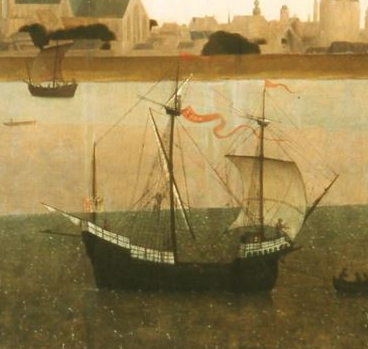

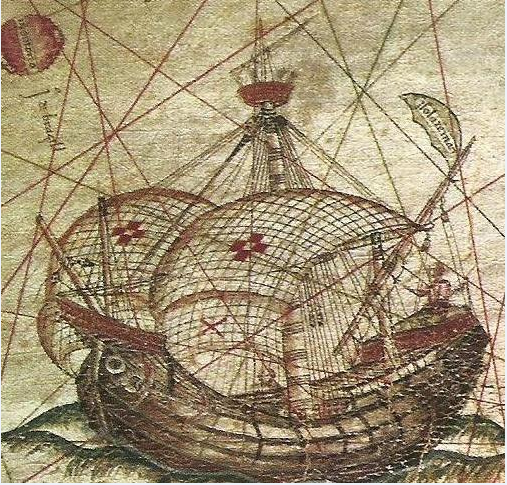


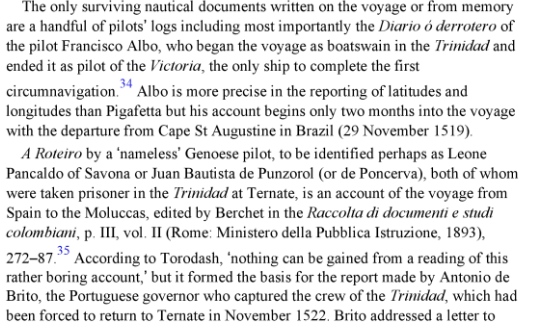
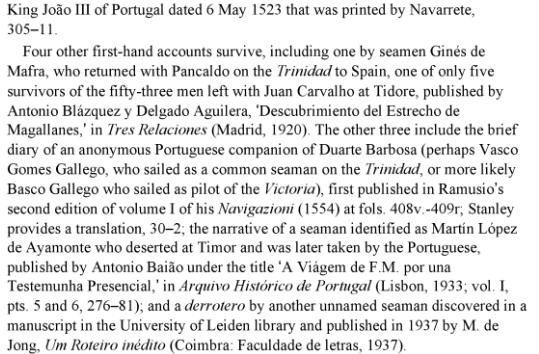
_12.thumb.jpg.517cd7fa08c476b568398a66f0233c81.jpg)
_13.thumb.jpg.146d49308a440a993483474f190aeae4.jpg)
